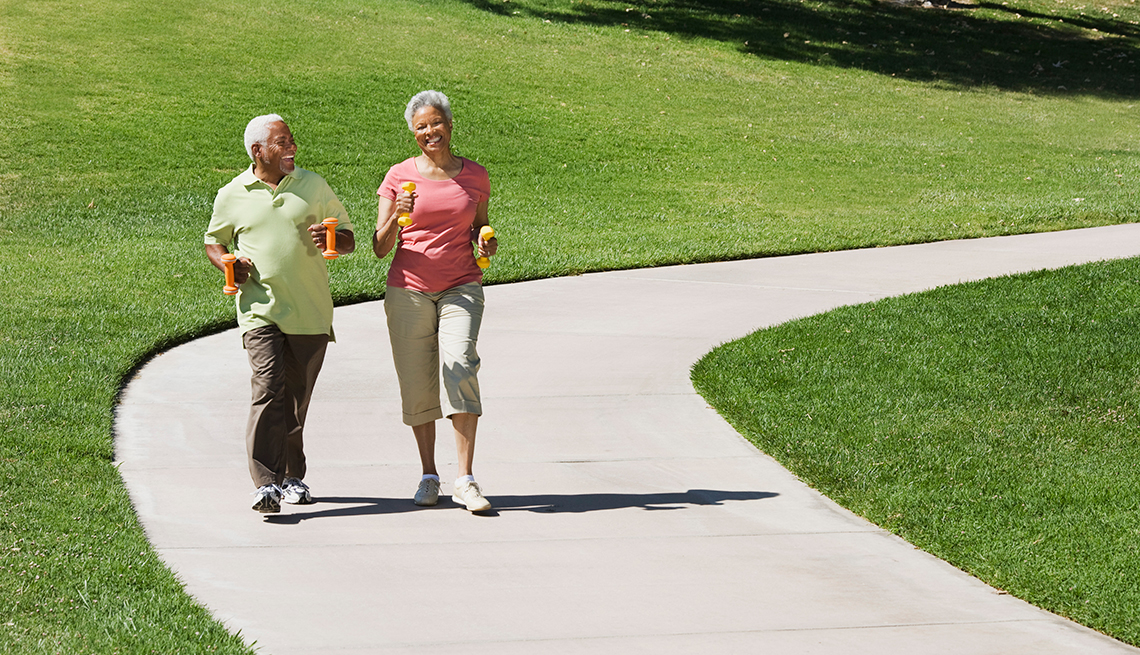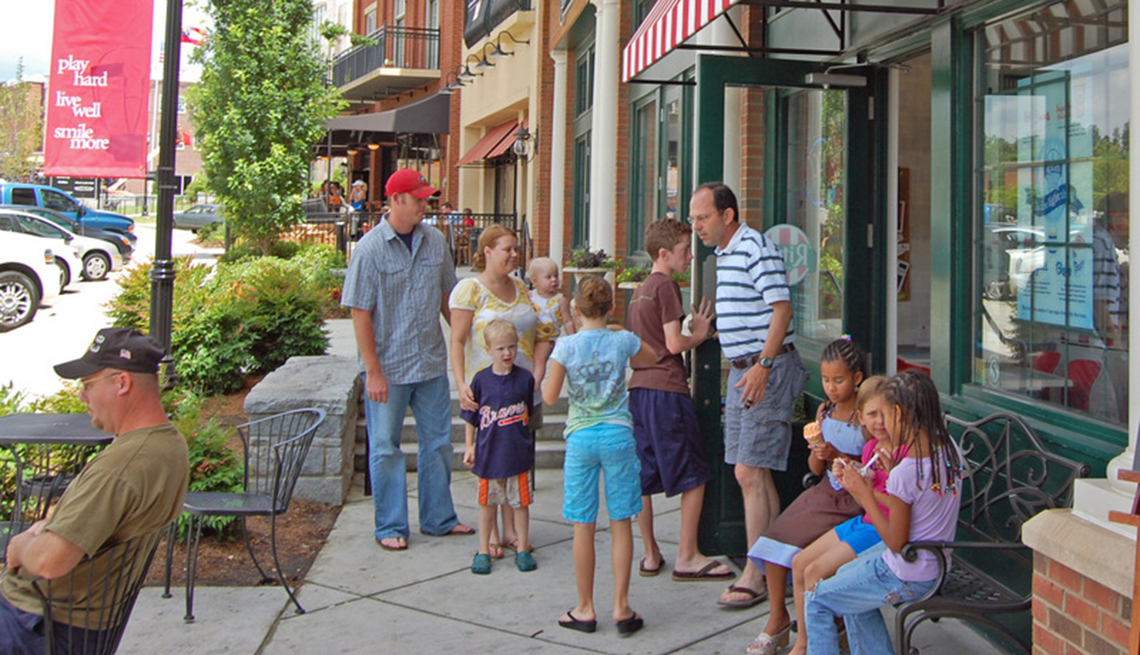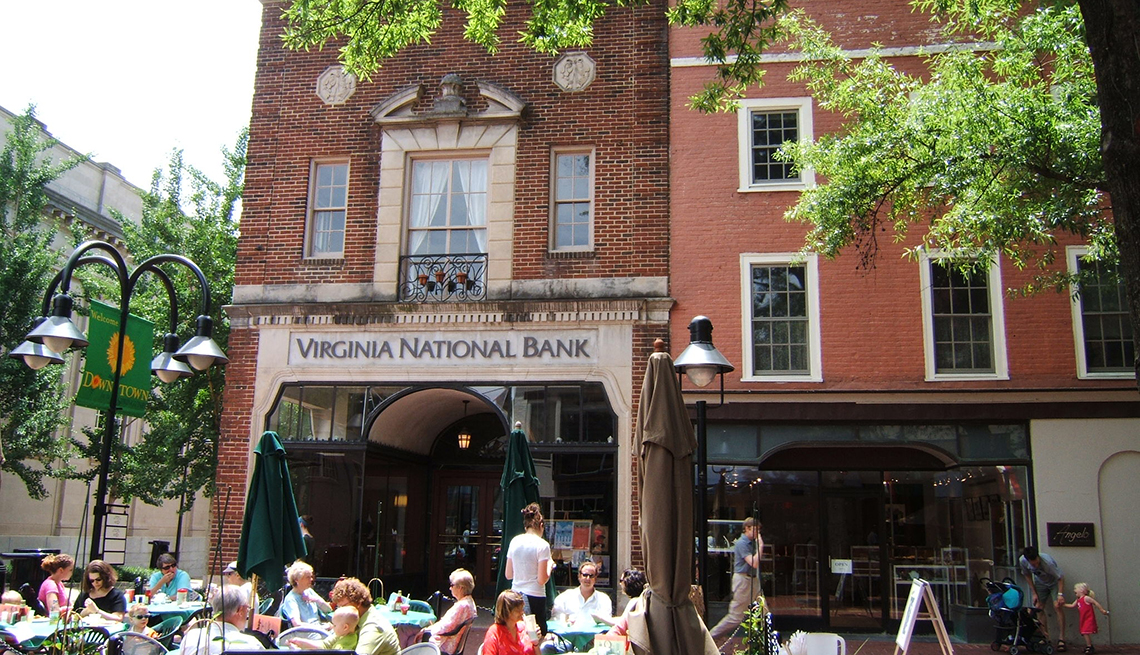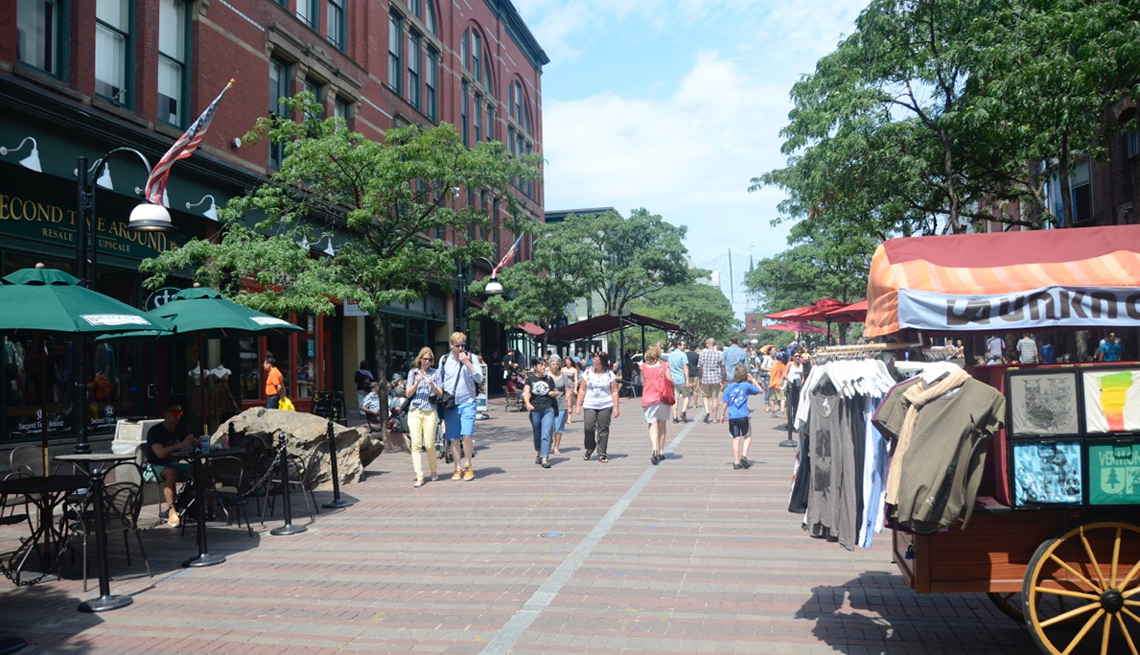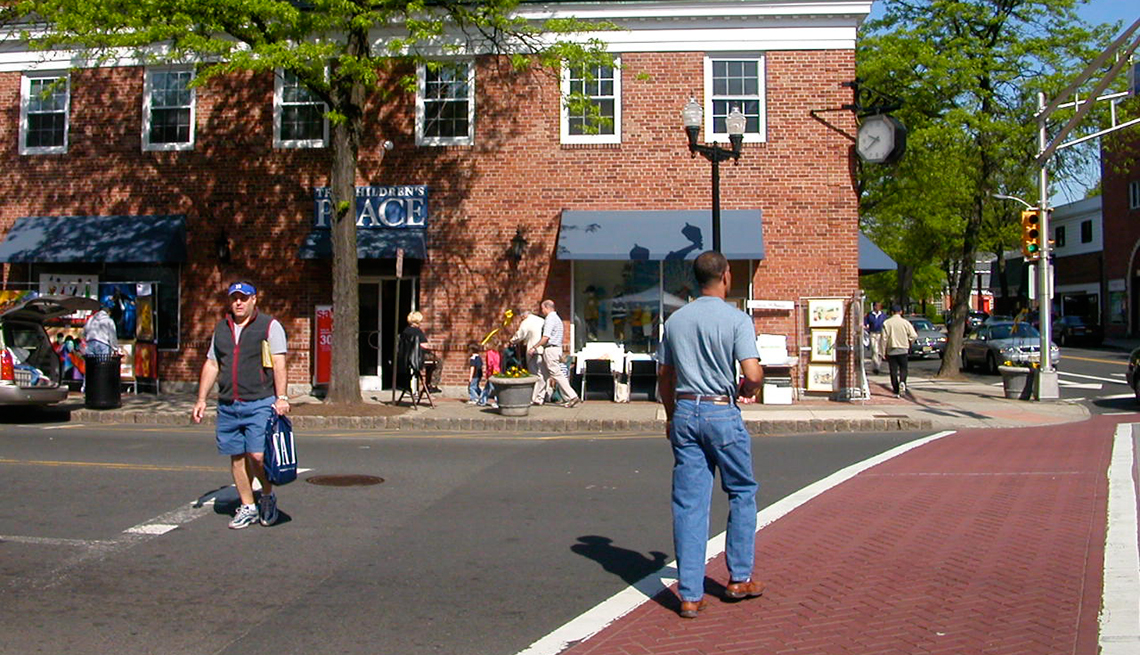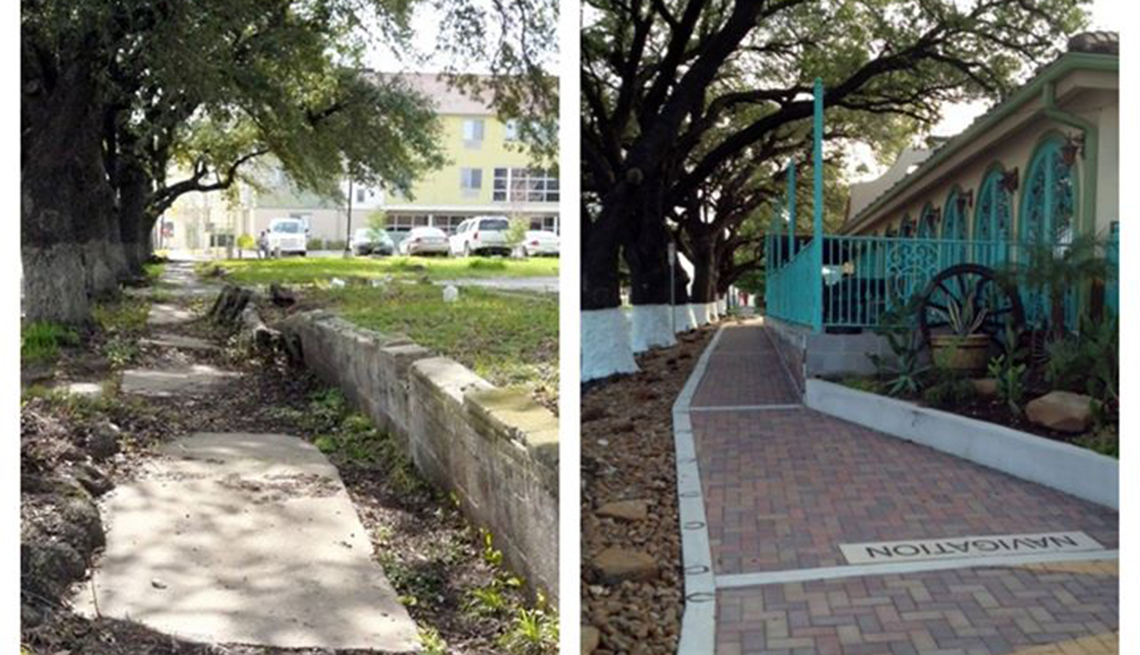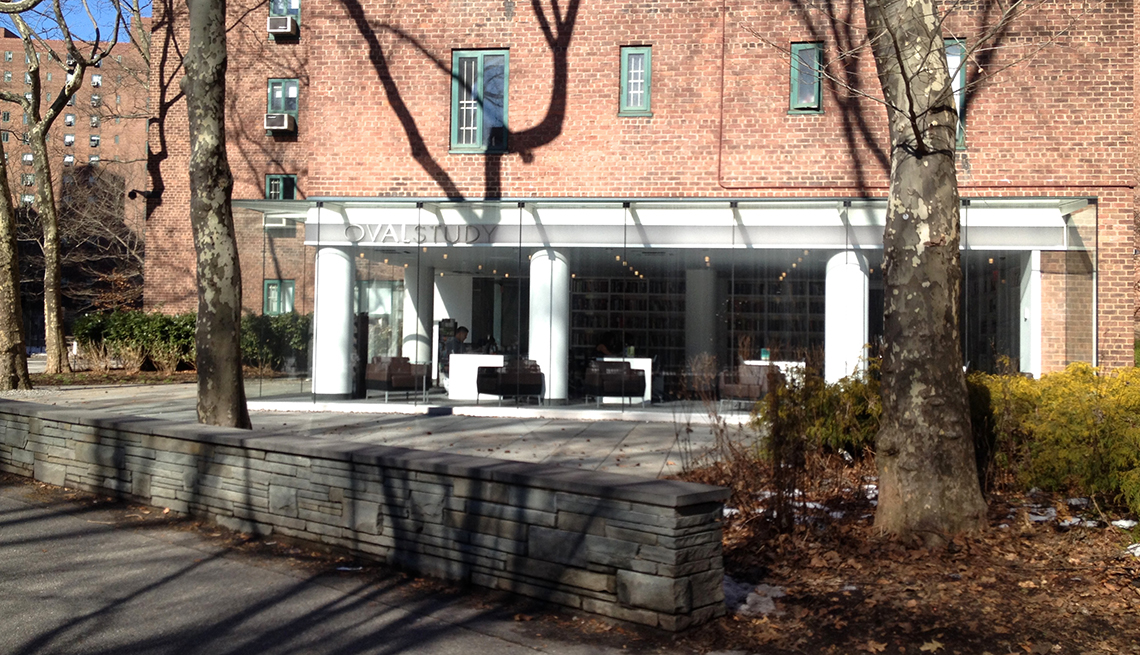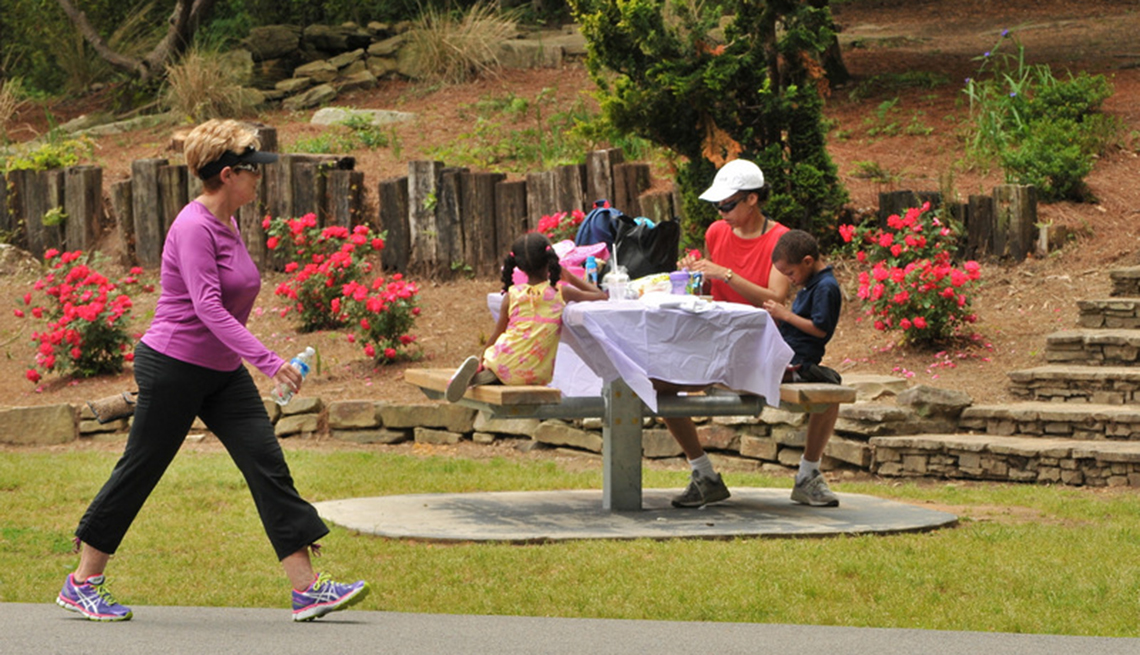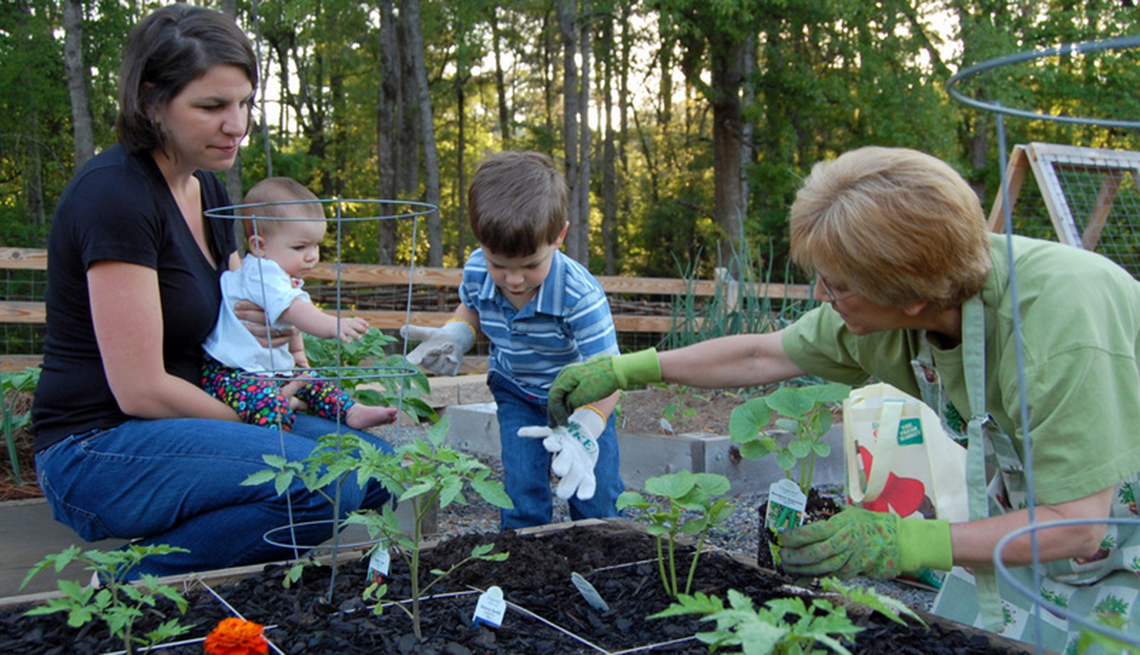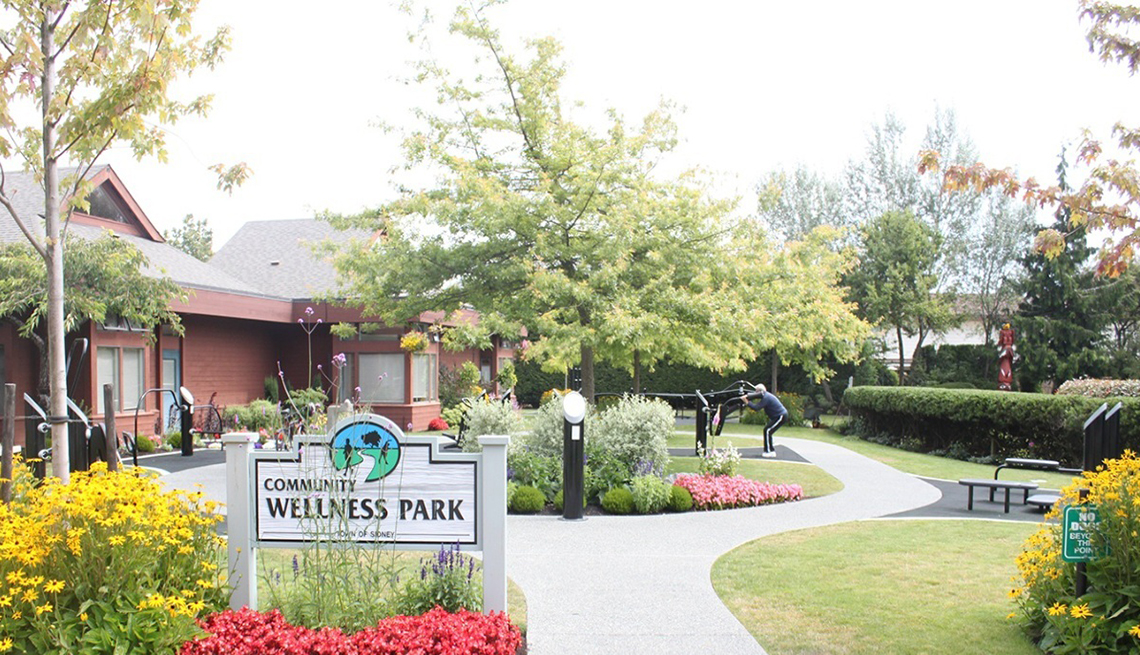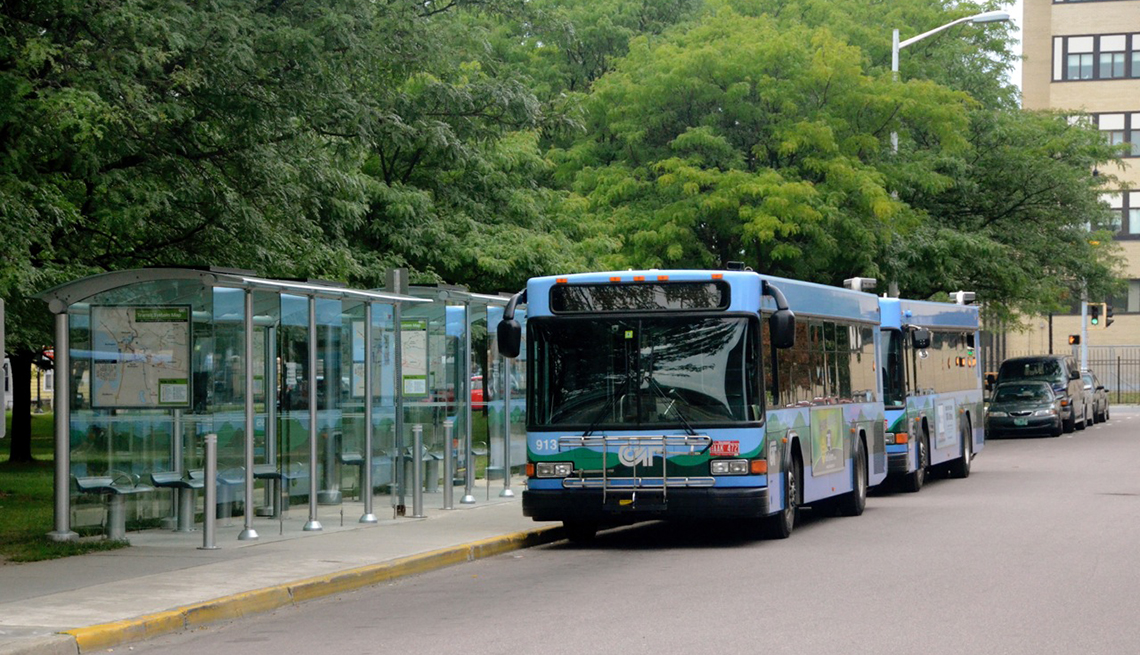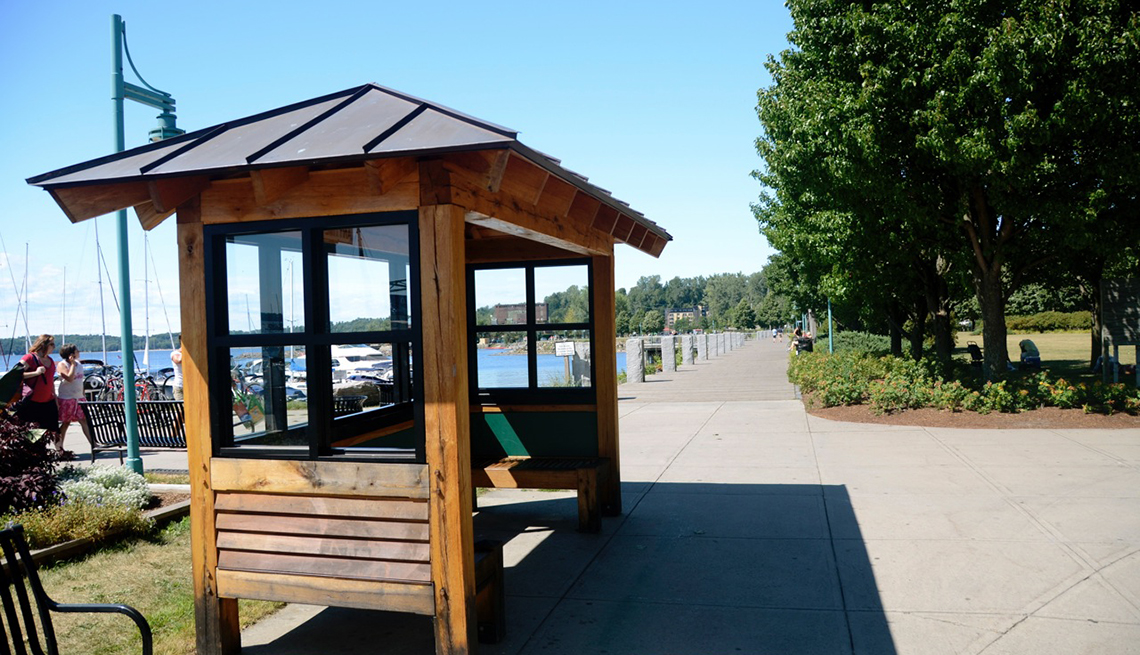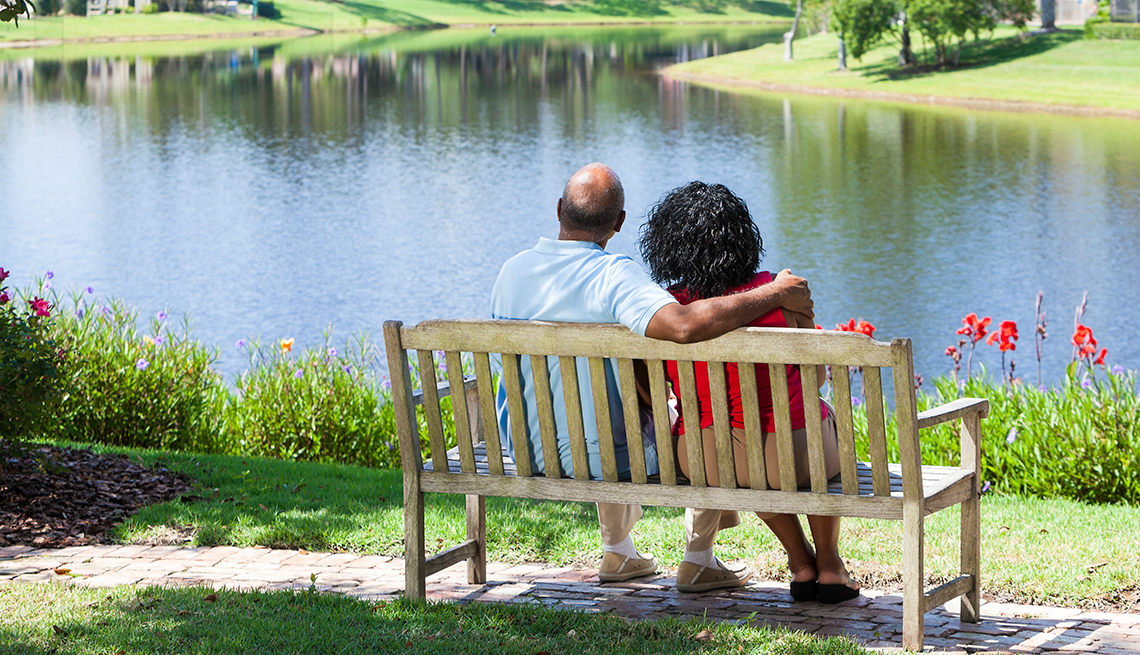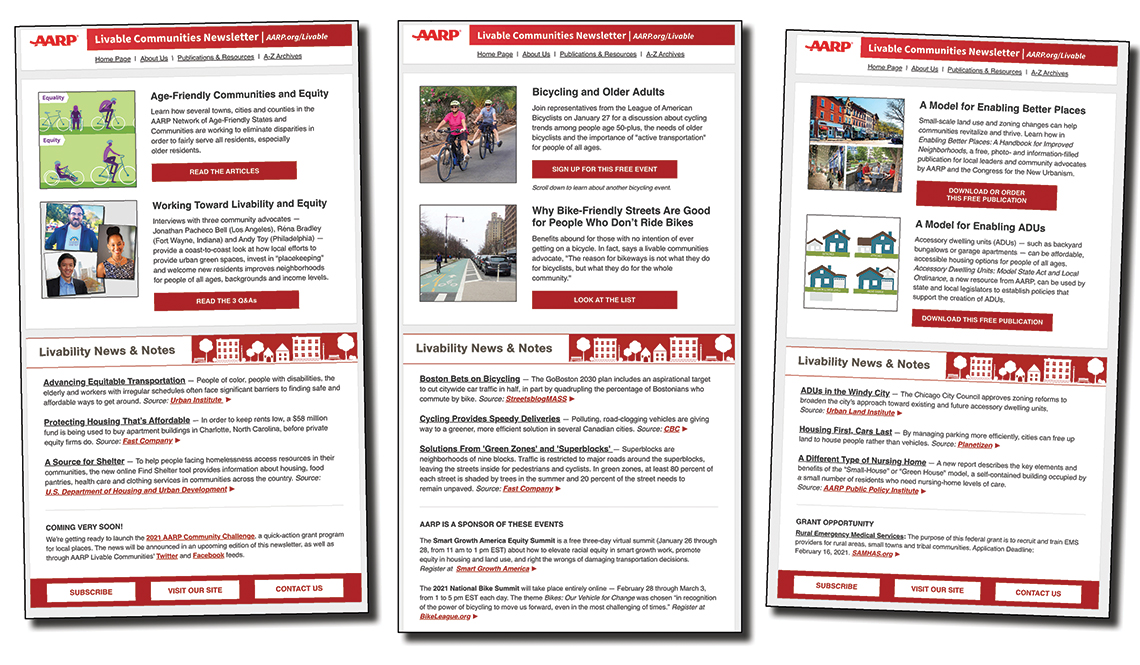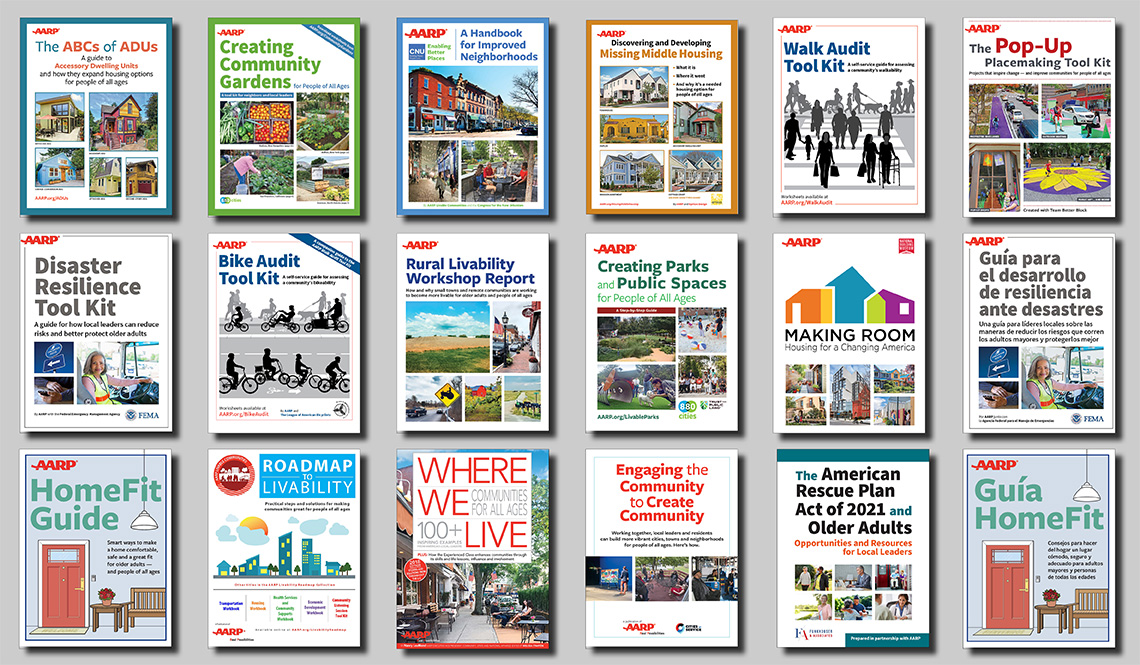Livable Communities: A Show and Tell
Walkability, places to gather, outdoor spaces: These features and more make a city, town or neighborhood a livable place for being 50-plus — or any age
by Melissa Stanton, AARP Livable Communities
-
Getty Images
Livable Places, For All Ages
The common features of a livable commmunity involve a place that’s safe, has usable outdoor spaces, provides opportunities for work and play, and includes needed services and effective ways to get around, no matter a person's age or life stage.
1 of 14 -
Photo courtesy city of Suwanee, Ga.
A Town Center
The original downtown in Suwanee, Ga., was historic, but off the beaten path. The city's still new, built-from-scratch town center is now a busy gathering place with shops, eateries, an outdoor amphitheater and a splash fountain for kids.
2 of 14 -
Photo by David Goodman
Sidewalks and Streetlights
Sidewalks can be destinations, such as in Charlottesville, Va., where the sidewalks on E. Main Street provide room enough for dining as well as passersby. Street-level light fixtures illuminate the area after dark. Trees and umbrellas supply shade.
3 of 14 -
Photo by Max Truman
People Power
Pedestrian-only byways are so rare that in many communities the only safe place to go for a walk is inside a shopping mall. This outdoor mall on Church Street in Burlington, Vt., is a "totally hopping place, even in cold weather," says a resident.
4 of 14 -
Photo by Melissa Stanton
Follow the Red Brick Road
Brick crosswalks at the busy intersection of Elm and East Broad streets in downtown Westfield, N.J., provide clear indicators of where drivers should stop and pedestrians should (ideally) walk to more safely cross the road.
5 of 14 -
Photo by AARP Texas
Safe Passage
Getting from a bus stop on Manchaca Road in South Austin, Texas, to the senior center across the way required nerves of steel. (See the video link below left.) AARP members lobbied for a crosswalk and traffic signal — and won!
6 of 14 -
Photo by AARP Texas
No Bumps in the Road
As part of a renovation project in Houston, a rocky path received a facelift. Now, the Navigation Boulevard walkway can be safely used by everyone for whom loose gravel and broken cement are an accident waiting to happen.
7 of 14 -
Photo by Melissa Stanton
A Community Living Room
Manhattan's Stuyvesant Town apartments date to the 1940s, but it's only been a few years since the ground floors of several buildings were converted into community spaces, including a café, a children’s center and (left) a shared reading room.
8 of 14 -
Photo courtesy city of Suwanee, Ga.
Paths and Picnic Tables
A decade ago, Suwanee, Ga., had less than 25 acres of parks and trails. The city's strategic plan to increase and preserve its green spaces has resulted in more than 325 acres of parks, paths, playgrounds and (see the next slide) gardens.
9 of 14 -
Photo courtesy city of Suwanee, Ga.
Growing Together
The Harvest Farm Community Garden — the largest organic garden in Georgia — is owned and operated by the city of Suwanee. Raised planting beds are rented by residents and (if any of the 76 plots remain) non-residents too.
10 of 14 -
Photo courtesy city of Sidney, British Columbia
Fitness and Fresh Air
Just steps from the public library, the Community Wellness Park in the Canadian city of Sidney is an outdoor exercise space. Offerings include cardio steppers, a mobility rehabilitator and Tai Chi wheels.
11 of 14 -
Photo by Max Truman
Ways to Get Around
Not everyone has a driver's license, or owns a car. Safe, reliable, public transportation options (such as these buses in Burlington, Vt.) can help people make their town, city or community a lifelong home.
12 of 14 -
Photo by Max Truman
Places to Sit and Wait
Traveling by bus, train, foot or bicycle are useful ways to be out and about. If the weather turns bad, or tired feet need a break, outdoor shelters (such as this one along the Vermont side of Lake Champlain) are a welcome refuge.
13 of 14 -
Getty Images
Your Livable Community
Think about the places you frequent. Do the locations have appealing, livable features? Perhaps you’ve been involved in livability efforts. Show and tell us by emailing livable@aarp.org or Tweeting an image to @AARPLivable.
14 of 14
Stay Informed — For Free!
The weekly, award-winning AARP Livable Communities e-Newsletter provides local leaders with information and inspiration for making their town, city or neighborhood more livable for older adults and people of all ages. Subscribe today!
AARP.org/Livable
Enter a topic, name, place, etc.
See past issues: Visit our newsletter archive »
Our Free Publications!
See the complete list at AARP.org/LivableLibrary
Follow Us
- X: @AARPLivable
- Facebook: @AARPLivableCommunities
Contact Us
- Email AARP Livable Communities at Livable@AARP.org.
- Ask about the AARP Livability Index by completing this online form.
- AARP Members: For questions about your benefits, AARP The Magazine or the AARP Bulletin, visit the AARP Contact Us page or call 1-888-OUR-AARP (1-888-687-2277).

